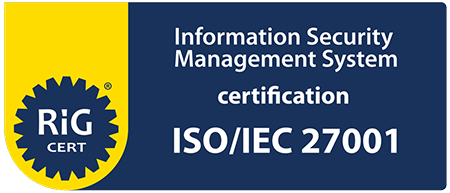More and more businesses are becoming convinced of the undeniable benefits of strategic HR. And perhaps the most visible evidence of this is that many organisations are starting to leverage an increasing amount of data and pay attention to various metrics concerning their HR as a key part of the company's overall business strategy.
Data-driven HR management makes processes and operations more efficient and improves employee well-being and satisfaction. All of this can have a huge impact on an organisation's ability to achieve its strategic goals, and that's what makes data so valuable.
There are many tools that measure different HR metrics, but how do you know which ones can impact your employee development and retention and organisation's results? That's why, no matter what tools you may use, make sure they offer tracking of the following metrics for each employee:
Performance:
Always pay attention to what extent each employee meets the requirements and goals set for his/her position. Monitor and give feedback on how he/she is doing, whether your employee meets, do not meet, or exceeds your expectations regarding those requirements and whether he or she often needs improvement or guidance in his/her work.
Potential:
Does your employee demonstrate a potential to perform more varied and complex work or tasks with a higher level of complexity? Does he or she fully utilise his/her potential when performing more difficult tasks, or it will take months or a year for the employee to be capable of taking on a broader range of responsibilities? Or maybe he or she is ready for a more responsible position?
Knowledge and skills:
To what extent does your employee have the knowledge and skills to fulfil 100% of the job requirements? Does his/her current capacity allow the employee to handle only simple tasks, or enables him/her to solve problems and work successfully with more complex and challenging tasks beyond his/her current duties?
Engagement:
Does your employee identify with the company, and is he/she committed to the job? Does this person have the will and desire to invest extra efforts in the work process? You need to regularly evaluate whether the employee's engagement is low and he/she shows a minimum performance level considering the job requirements or, on the contrary, his/her engagement is high, and this person is willing to do more work, offers help, and is enthusiastic about the job.
Leadership potential:
Does your employee have the potential to lead people, to create an environment where people can and want to perform? Track how he or she fits into the team, whether he's/she's more productive working alone or works better in a group of people. Is this person able to organize people and resources to achieve goals, and can he/she motivate colleagues to improve overall team performance?
Ambition:
Always pay close attention to an employee's desire and ambition to develop, self-improve and advance in their career. Does this person have the flexibility needed for such a move? Consider if the employee is happy with the status quo and does not see the benefit of advancing in the career, or the opposite - he/she is serious about career development, have high ambitions for self-improvement, and is willing to change the environment for the sake of his/her own of career progression.
Motivation and self-confidence:
Be clear if and how each employee in the company can be motivated. Find out whether people see their job in your company only as a way to earn a living or they see it as a "calling" that helps them develop their strengths.
Energy:
Assess how much corporate energy an employee consumes or generates. In other words, is this person difficult or easy to work with, is he or she cooperative, bothering or energising the team? Does the employee positively influence the people around him/her, and is he/she able to create a positive teamwork atmosphere?
Loyalty:
Does your employee identify with the company and feel emotionally connected to it? Is he or she critical in a positive and constructive way, or his/her statements stress only the negative aspects of a situation?
Market attractiveness:
Always be aware of how attractive the skills, knowledge, experience and personality of each of your employees are in the job market. Also, regularly assess whether they could easily find a job outside the organisation.
Strategic relevance:
Determine whether the position an employee has is strategically important to the execution of the company's business strategy in the short and long term.
Availability in the market/Internal succession:
How easy would it be to find an experienced and qualified replacement for your employee both in the labour market and in the company, who, on the one hand, you can afford and, on the other hand, get it efficient in a short time period?
It's highly important to track all these metrics because their assessment and analysis can provide you with accurate information and guidance on retaining your most valuable employees, the dependence of the organisation on them, and the HR risk the company may face if any of your people leave.
With the web-based Talent Portfolio tool we have developed, you can easily and quickly reflect on each metric listed above. Based on the data you regularly enter, you'll get an individual assessment for each employee and a comprehensive view of your talent portfolio over time, both by teams and the whole organisation. You can create individual employee development plans, predict potential HR risks, and track the development measures that yield the best results across the company.
Test some of the key features of the full web-based version of Talent Portfolio for free via our mobile app, Talent Portfolio App!
More information about Talent Portfolio




